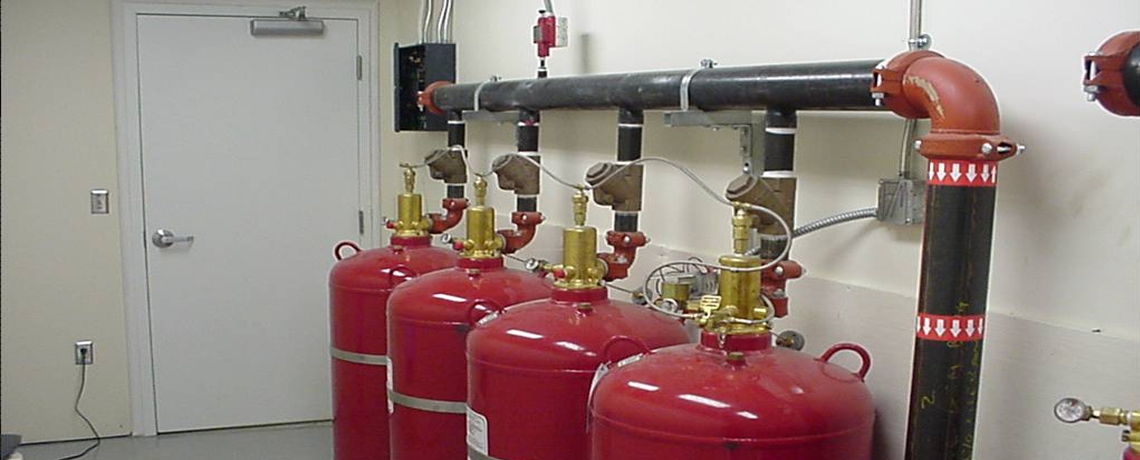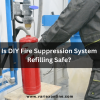![]()
Fire Immuniser
+91-7829629111
Email: info@variex.in
Varistor Technologies Pvt. Ltd.
Block-1, First Floor, Ardente Office One, Hoodi Circle, ITPL Main Road, Bengaluru, Karnataka 560048, IN
How Many Types Of Fire Suppression Systems Are There?
Fire suppression systems are vital components of any building's safety infrastructure, designed to extinguish or control fires swiftly and effectively. These systems utilize various technologies and methods tailored to specific environments and fire hazards. Understanding the different types of fire suppression systems is crucial for ensuring appropriate protection and compliance with safety standards.
Water-Based Fire Suppression Systems:
- Wet Pipe Systems: These systems are commonly found in office buildings, residential complexes, and commercial establishments. They are relatively simple in design, consisting of pipes filled with water and equipped with sprinkler heads. Upon detection of heat or smoke, the sprinkler heads release water onto the fire-affected area, helping to suppress or extinguish the fire.
- Dry Pipe Systems: Typically used in unheated spaces or areas prone to freezing temperatures, such as parking garages or warehouses, dry pipe systems prevent water from freezing inside the pipes. When activated, a valve opens to allow water into the pipes, which then discharges through the sprinkler heads.
- Deluge Systems: These systems are often employed in high-hazard environments like chemical storage facilities, power plants, or aircraft hangars. Unlike typical sprinkler systems, deluge systems feature open nozzles that release a large volume of water immediately upon activation, covering a wide area rapidly to control or extinguish the fire.
Gaseous Fire Suppression Systems:
- Clean Agent Systems: These systems are favored for protecting valuable assets, data centers, and sensitive equipment because they leave no residue and are safe for occupied spaces. Clean agents like FM-200 or Novec 1230 quickly extinguish fires by reducing the oxygen concentration without causing harm to people or equipment.
- Inert Gas Systems: Inert gases, such as argon or nitrogen, are used to displace oxygen in enclosed spaces to extinguish fires. These systems are commonly installed in areas where water or chemical agents may damage sensitive equipment or where cleanup is impractical, such as museums, archives, or historical buildings.
Foam-Based Fire Suppression Systems:
- Aqueous Film-Forming Foam (AFFF): AFFF forms a thin film over the fuel surface, effectively smothering the fire by preventing oxygen from reaching the fuel source. These systems are commonly used in industries handling flammable liquids, such as petrochemical facilities, fuel storage depots, and manufacturing plants.
- High-Expansion Foam: High-expansion foam systems generate large volumes of foam, expanding to fill enclosed spaces quickly. They are effective for suppressing fires in areas with high ceilings or where rapid fire spread is a concern, such as warehouses, hangars, or tunnels.
Powder-Based Fire Suppression Systems:
- ABC Dry Chemical Systems: ABC dry chemical agents are versatile and can extinguish fires involving ordinary combustibles (Class A), flammable liquids (Class B), and energized electrical equipment (Class C). They are commonly used in commercial kitchens, paint booths, and manufacturing facilities.
- Class D Powder Systems: These systems are specifically designed to extinguish fires involving combustible metals such as magnesium, titanium, or lithium. Specialty dry powders, such as sodium chloride or copper-based agents, are used to smother the fire and prevent reignition.
Aerosol Fire Suppression Systems:
- Condensed Aerosol Systems: Condensed aerosol systems generate a rapidly expanding cloud of fine solid particles that inhibit the chemical reaction of the fire. They are effective for protecting enclosed spaces with sensitive equipment, such as server rooms, electrical cabinets, or control rooms, where traditional suppression agents may cause damage.
By understanding the nuances of each type of fire suppression system, stakeholders can make informed decisions regarding their installation, maintenance, and effectiveness in protecting life and property against the threat of fire. Regular inspection, testing, and maintenance are essential to ensure that these systems remain operational and reliable in the event of an emergency.
Frequently Asked Questions
A fire suppression system is a specialized apparatus designed to detect, control, or extinguish fires in buildings, vehicles, or other structures. These systems include various technologies and agents tailored to specific fire hazards and environments.
Fire suppression systems are essential for protecting life, property, and assets from the devastating effects of fires. They help to control or extinguish fires swiftly, reducing the risk of injury, minimizing property damage, and safeguarding valuable resources.
Fire suppression systems can be categorized into various types, including water-based systems (such as wet pipe, dry pipe, and deluge systems), gaseous systems (clean agent and inert gas), foam-based systems, powder-based systems, and aerosol systems.
Fire suppression systems operate based on different principles, such as cooling, oxygen displacement, chemical inhibition, or smothering, depending on the type of system and agent used. For example, water-based systems extinguish fires by cooling the fuel and suppressing the flames, while gaseous systems disrupt the combustion process by reducing oxygen levels.
Fire suppression systems are installed in a wide range of environments, including commercial buildings, industrial facilities, residential properties, vehicles, and specialized areas like data centers, server rooms, or chemical storage facilities. They are strategically placed to provide optimal coverage and protection against potential fire hazards.
Final Say
We at VariEx.in or Variexonline.com have mastered the art of designing, installing, inspecting, and fixing automatic sprinkler systems with the help of our in-house team, which is capable of delivering the fire sprinkler services you need, whether large or small and at affordable cost.
To schedule a fire sprinkler installation, or you think our services could benefit your commercial property, contact us online or give us a call at, 7829629111









